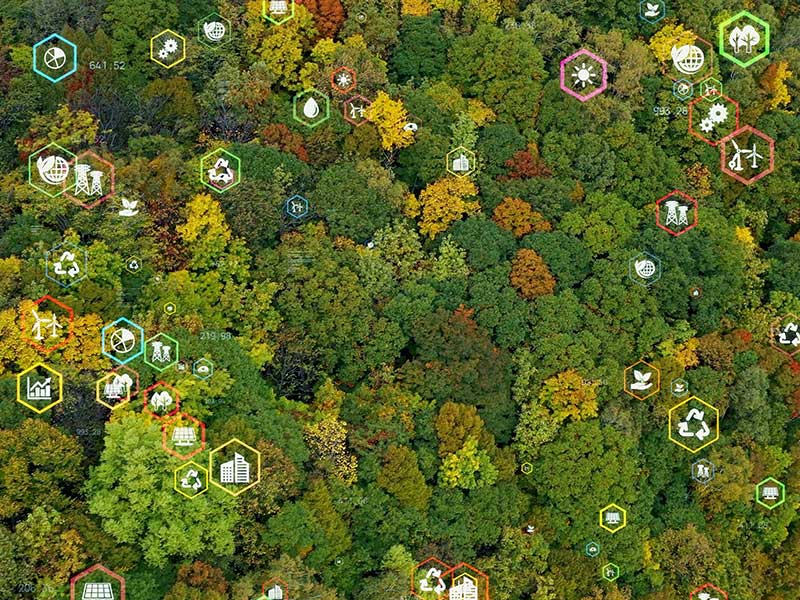
Over the past couple of years, many institutional investors have pledged to align their investment decisions with a net-zero future. To be sure, that is a good thing because the world needs to reduce greenhouse gas (GHG) emissions to net zero to avert the worst impacts of climate change.
However, investors must be careful not to focus solely on emissions and net-zero pledges at the expense of other ESG issues. In other words, we must avoid net-zero tunnel vision. Such tunnel vision is currently on display in Quebec, where the provincial government is granting mining claims to prospect for battery minerals in parks and conservation areas. Responsible investors should take note and ensure they are not making the same mistakes in their portfolios.
Admirable plans, clumsy implementation
In 2020, Quebec’s provincial government launched its Plan for the Development of Critical and Strategic Minerals alongside its Strategy for the Development of the Battery Sector. As part of these plans, the province aims to produce electric vehicles (EVs), develop battery recycling technologies, and exploit its reserves of lithium, nickel, graphite and cobalt for battery and EV components. Indeed, these are the kinds of plans that resource-endowed jurisdictions should be making, since the energy transition will be a shift from a fossil-fuel-powered economy to a mineral-powered one.
While Quebec’s plans are admirable, in practice the province is on a negligent path as it considers damaging parks and wildlife conservation areas to extract minerals for EV batteries and components.
According to the coalition Pour que le Québec ait meilleure mine, an environmental advocacy group, 15,413 mining claims have been granted in southwestern Quebec, 56% of which occurred since January 2021. A mining claim is a title that gives its owner the right to probe a designated piece of land for minerals.
Hundreds of these claims are located on the edge of major parks and recreation areas such as Mont Tremblant and Lac Taureau, while others are located directly inside the Papineau-Labelle Wildlife Reserve and conservation zones known as ZECs in Quebec, including ZEC Bras-Coupé-Désert, ZEC Pontiac and ZEC Capitachouane. This map released by the Regroupement de protection des lacs de la Petite-Nation, a group of lake protection associations based in Petite-Nation on the territory of the Kitigan Zibi Anishinabeg First Nations, shows the location of the mining claims as of August 2022.
For those who don’t spend much time in Quebec, this is comparable to prospecting for resources in Algonquin Provincial Park in Ontario or Banff National Park in Alberta, or planning mines on the doorsteps of Whistler, B.C., and Collingwood, Ont.
This story has not been covered by English-language media. I was fortunate to learn about it in a conversation with Anne-Josée Laquerre, the executive director and co-founder of Quebec Net Positive, a non-profit organization that aims to accelerate the transition to a low-carbon economy. Laquerre stated that these mining claims are “a perfect example of the risks associated with net-zero tunnel vision,” adding that “investors and governments must seek more comprehensive data to support decisions that will generate ‘net-positive’ outcomes, well beyond net-zero emissions alone.”
The problems with net-zero tunnel vision
From a sustainability perspective, there are at least four big problems with Quebec’s current approach:
- Clearing forests to mine for EV battery minerals is counterproductive to climate objectives. Healthy forests have the ability to act as “carbon sinks” by pulling carbon from the atmosphere in a process known as carbon sequestration. When forests are cleared, burned or otherwise damaged, we lose a powerful nature-based solution to climate change. To stabilize the climate, we need more forests, not less.
- Mining in wildlife conservation areas threatens biodiversity and freshwater supplies, which provide vital ecosystem services that support life. For example, plants clean the air and filter water, bacteria decompose wastes, bees pollinate flowers, and tree roots hold soil in place to prevent erosion. The world needs to strengthen biodiversity, as roughly one million species are already at risk of extinction, and scientists estimate that the global rate of species extinction is currently tens to hundreds of times higher than it has averaged over the past 10 million years. To halt the destruction of ecosystems and support sustainable development, we need to protect biodiversity, not exacerbate its decline by damaging wildlife conservation areas.
- There has been no public consultation with local communities that would be affected by the mines. This past summer, 21 municipalities campaigned against the mining claims and demanded their voices be heard in the approval process. More recently, the Fédération québécoise des municipalités, which represents more than 1,000 municipalities, wrote an open letter urging the provincial government to reform the mining approval process and consult with local communities on development plans. As leading responsible investors know, responsible resource development requires the free, prior and informed consent (FPIC) of Indigenous and local communities that are impacted by industrial projects. Failure to consult local communities is a failure to support sustainable and inclusive development.
- Developing mines in, or adjacent to, recreational places like Mont Tremblant and Petite-Nation could restrict people’s access to nature. The health benefits of being in nature are well documented, with research showing that spending time in nature can lead to lower stress, better mood, improved attention, reduced risk of psychiatric disorders and upticks in empathy and cooperation. Canadian cities will become increasingly crowded as the country ramps up immigration, which makes our green and recreational spaces even more precious. So, while it makes sense for Canada and Quebec to develop their natural resources to power the economy of the future, it is (quite literally) saddening to do so in a way that could restrict people’s access to nature.
Conclusion
Make no mistake: the transition to clean energy and battery-powered vehicles will involve a mining boom, and Canada is endowed with lithium, nickel, copper, graphite and other minerals that will power the low-carbon economy of the future. The energy transition is a big opportunity for Canada, but we must extract these resources in a responsible way, with FPIC and participation from Indigenous and local communities. With some thoughtful coordination, Canada can maintain and strengthen its position as a global energy powerhouse in a low-carbon world.
Surely, there will be trade-offs, and we cannot succumb to NIMBYism. But we must be thoughtful, not hasty, in seizing the opportunity. Business and investment decisions should consider not only emissions and net-zero pledges but also the broader implications for sustainability, such as biodiversity and social factors like FPIC and human health.
As Laquerre said, “We must acknowledge that some deposits of so-called strategic minerals, as tantalizing as they are in terms of their economic growth potential, must be considered stranded assets in order to safeguard local economies, citizens’ rights, carbon sinks, biodiversity, and the watershed needed to sustain life and halt global warming.”
Dustyn Lanz is senior advisor with ESG Global Advisors Inc.
